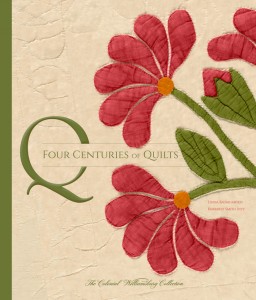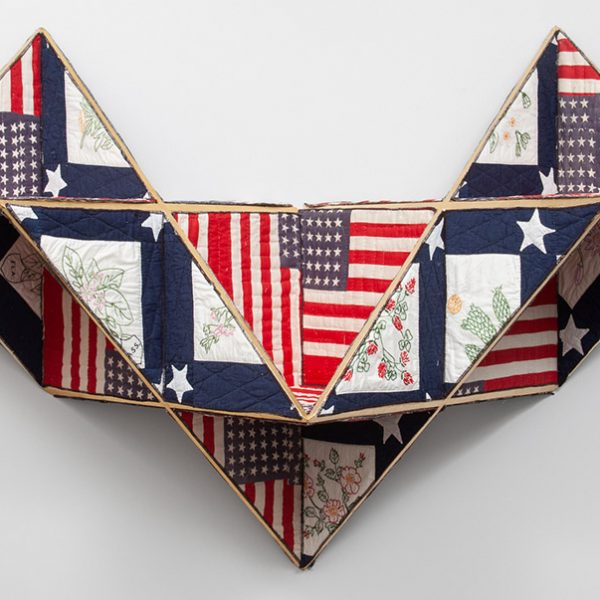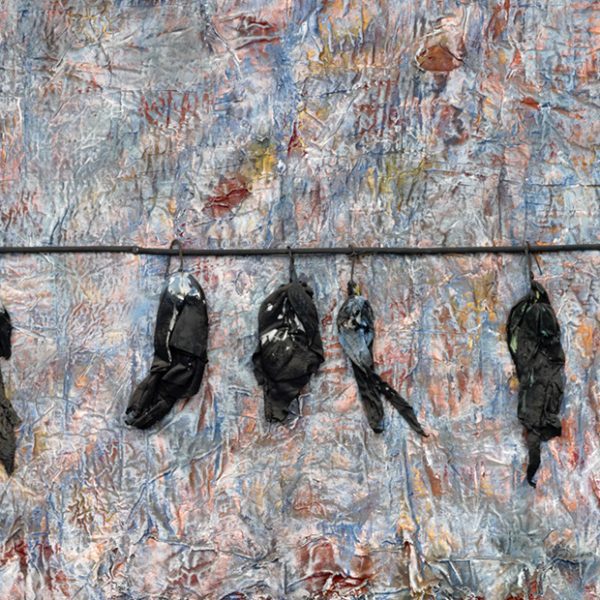A Sneak Peek at Colonial Williamsburg’s Quilts
We’re thrilled to announce a forthcoming collaboration with the Colonial Williamsburg Foundation. This October, they will publish, and we will distribute, a monumental and eye-poppingly gorgeous book on quilts. By Linda Baumgarten and Kimberly Smith Ivey, and with a foreword by Ronald Hurst, Four Centuries of Quilts: The Colonial Williamsburg Collection draws from this world-renowned collection to include quilts made by diverse religious and cultural groups over 400 years and across continents – from the Mediterranean, America, England, France, and Polynesia. We’re pleased to share with you today a sneak peek from the book in the form of the touching coda, entitled “Closing Remarks.”
It is mid-July 2012. The authors are talking with Colonial Williamsburg’s decorative arts librarian, Susan Shames, who was immensely helpful in the time-consuming genealogical research of the quilt makers. We are discussing the underlying theme of sisterhood that weaves throughout many of our quilt stories. Susan becomes pensive. Looking up she quietly informs us, “I quilt with my sister, too”.
Susan’s words so succinctly reinforce the significance of quilts and why it is important to study them today. Quilt making transcends time. In addition to their warmth and beauty, quilts symbolize the unique experiences and contributions of women–both past and present. As connectors, or, if you will, direct highways, to the past, other cultures, and other peoples, quilts are important historical documents. They are a wealth of information, as informative as a history class, and certainly more beautiful and enjoyable to study. Through the study of quilts, we learn about the evolution of styles and fashion; social, political, and economic issues of particular times and places; and the importance of family and community ties. Mensie Lee Pettway, twentieth-century African American quilt maker from Alabama, said, “A lot of people make quilts just for your bed, for to keep you warm. But a quilt is more. It represents safekeeping, it represents beauty, and you could say it represents family history.
Most, if not all, of the quilts presented in this book elicit a response from the viewer whether it’s because of their beauty, the skill with which they were created, or their vibrant color, remarkable condition, known provenance, and so on. They are made from cloth–the most intimate medium, for we are swaddled in it at birth, married in special clothing, and at death we are wrapped in it. Many quilts actually take the viewer into the sublime. They make you feel something you might not have felt otherwise. This is what makes many quilts a form of art and not simply a craft with the function of providing warmth. Through the study of quilts, quilt making, and quilt makers, we become interested in the life outside of our own and, thus, less self-centered and better citizens of the world.

Bear Paw Quilt, Susan Shames and Alice J. Patteson, James City County, Virginia, 2004, cottons and polyester, 12-13 running stitches per inch, 83 1/2 x 83 1/2 in. (212 x 212 cm), courtesy Susan Shames. As a young bride, Susan was inspired by a magazine illustration of a Bear Paw quilt pattern to create one of her own. Decades later, with four completed quilts under her belt and her four children grown, she finally had the space and time in her life to design and finish her interpretation of the favorite pattern. Susan’s sister, Alice Patteson, assisted in the quilt-making process, as she did with Susan’s other quilts, by cutting out the swatches of colorful fabric. Many of the pieces were unused scraps from previous sewing projects: Susan’s childhood bedroom curtains, her grandmother’s plaid dress, a blouse from the 1960s, her mother’s red-and-black printed dress, and fabric bits from other quilt projects. Each of Susan’s quilts tells a story. Some were made with stories in mind; stories developed around others as they were pieced and quilted.

Album Quilt, “From Your Friend,” Louise Beebee (later Mrs. Newton Darrow) (1843-1910) and friends, Waterford, Connecticut, 1860, cottons and wool with ink inscriptions and cotton and silk embroidery threads, 6 running stitches per inch, 92 1/2 x 75 1/2 in. (248 x 192 cm), Museum Purchase from the estate of Foster and Muriel McCarl, 2012.609.5. A group of female neighbors joined together to create this pieced and applique[acute accent]d album quilt intended to be a gift “FROM YOUR FRIEND,” according to the words applique[acute accent]d into one of the squares. A twentieth-century typed label sewn into the textile reads, “This quilt was made by Mrs. F. Newton / Darrow and Friends in 1860. / Property of Rev. and Mrs. E. W. Darrow.” In addition, several of the quilt makers embroidered, stamped, or stenciled their names onto the individual blocks: “Louisa,” “M Addie Chappell,” and “Cornelia Mei[g?]s.” The women can be traced to the community of Waterford in New London, Connecticut. In 1870, Louise Beebee Darrow was the twenty-seve-year-old wife of Newton Darrow, a farmer. Louisa was about seventeen years old when she worked on the quilt. Addie Chappell, who signed the “FROM YOUR FRIEND” block, has been identified as Adaline Chappell. She was twelve in 1860 when she signed her quilt square.

























